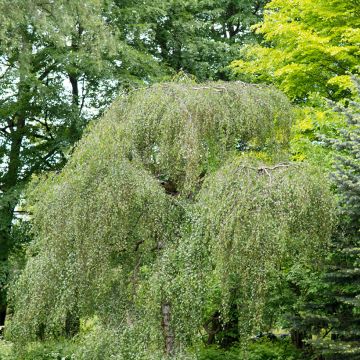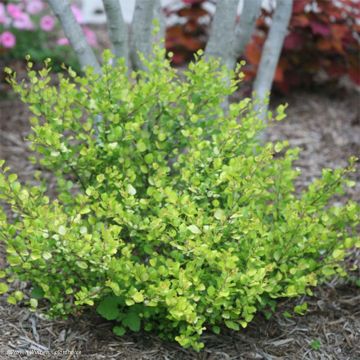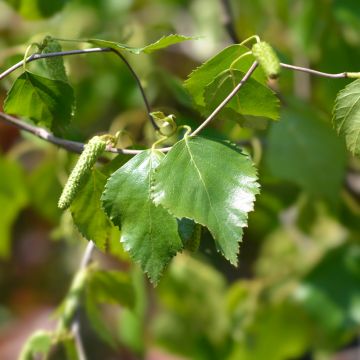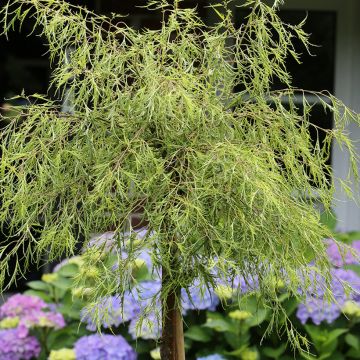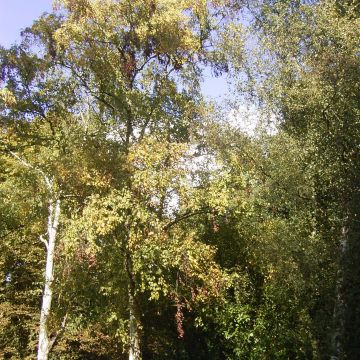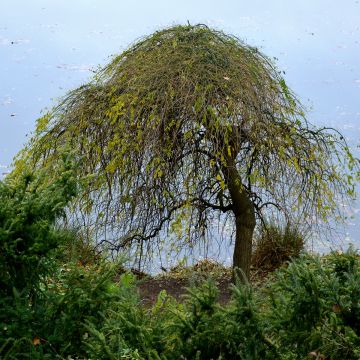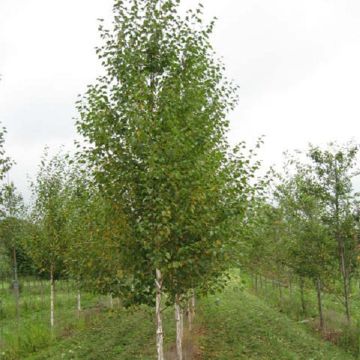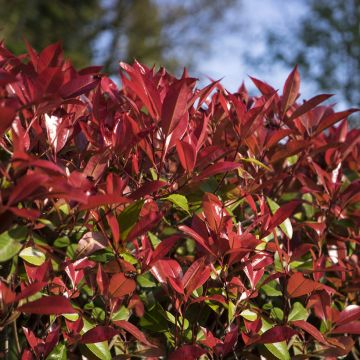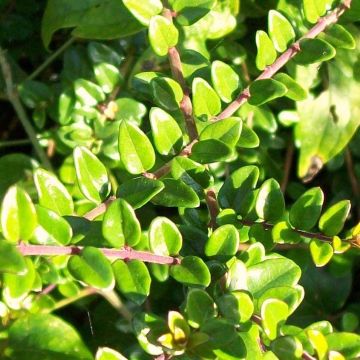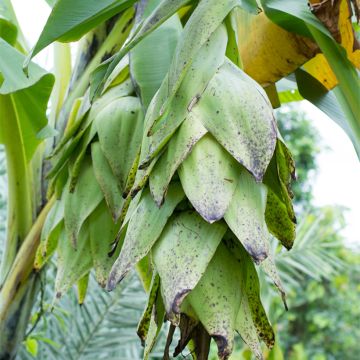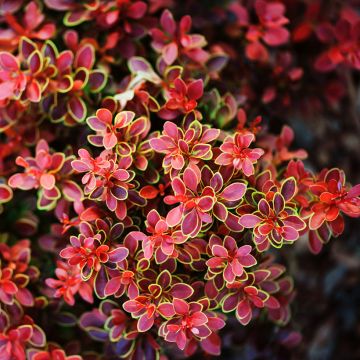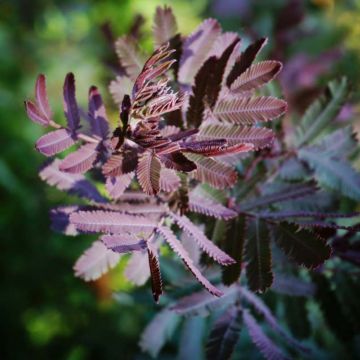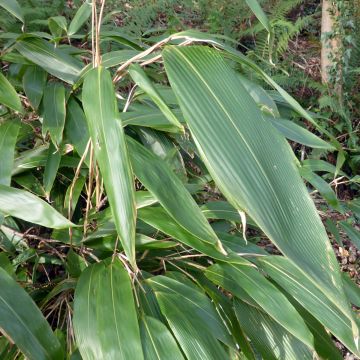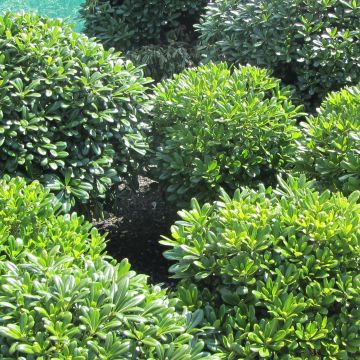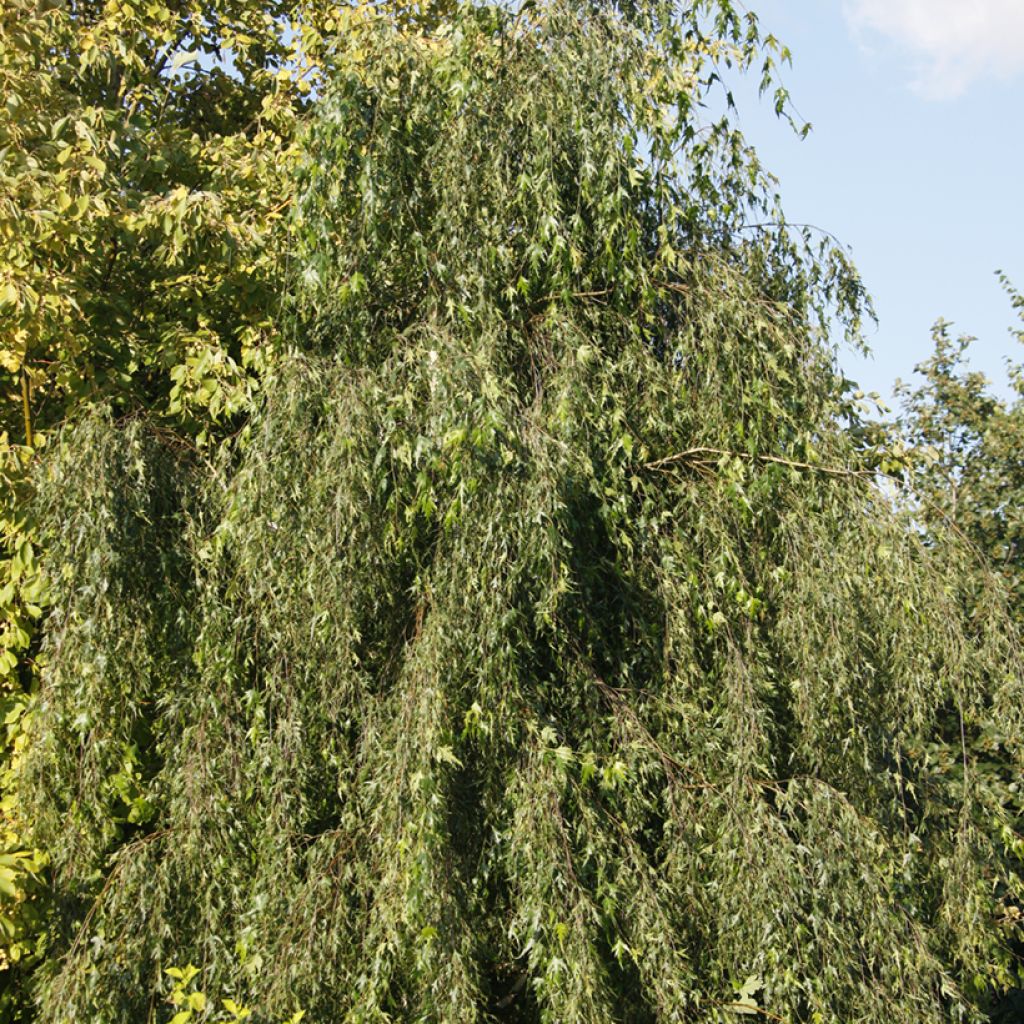

Betula pendula Gracilis - Weeping Birch
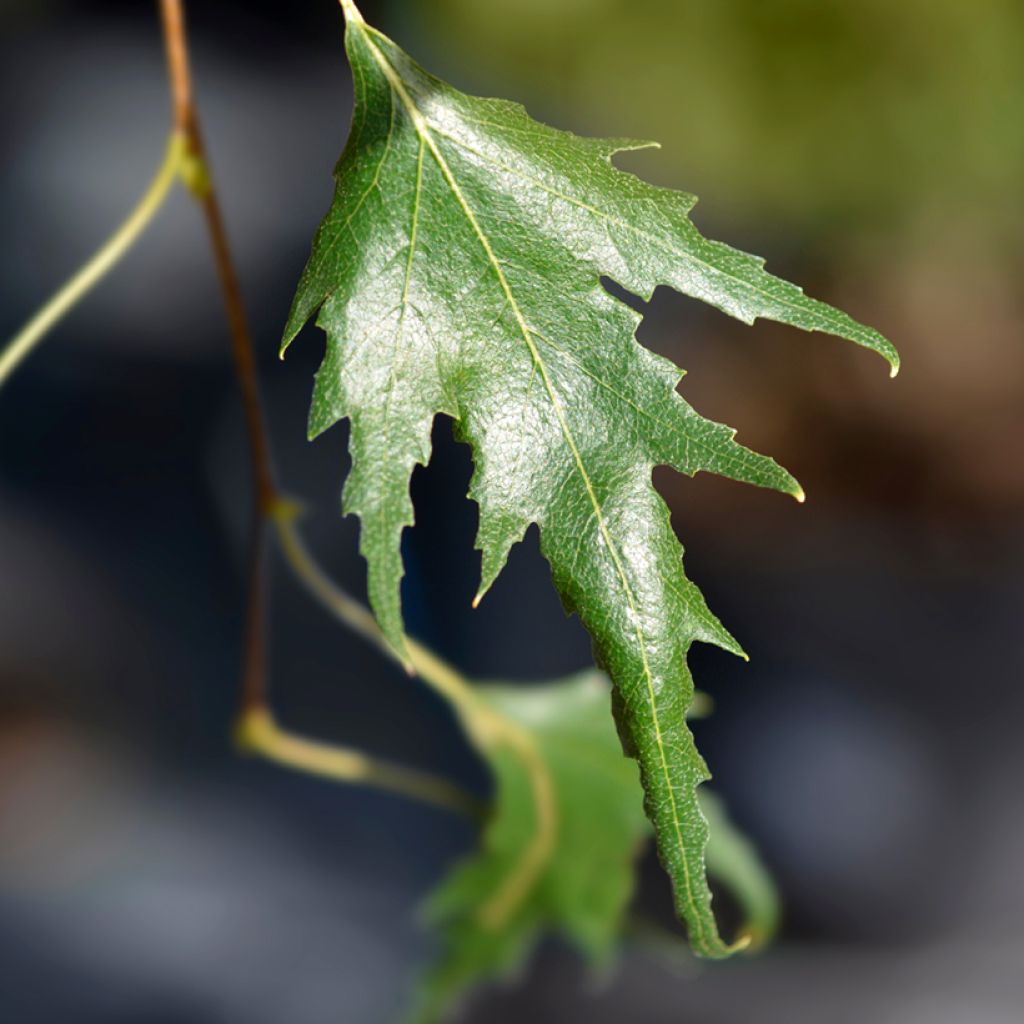

Betula pendula Gracilis - Weeping Birch
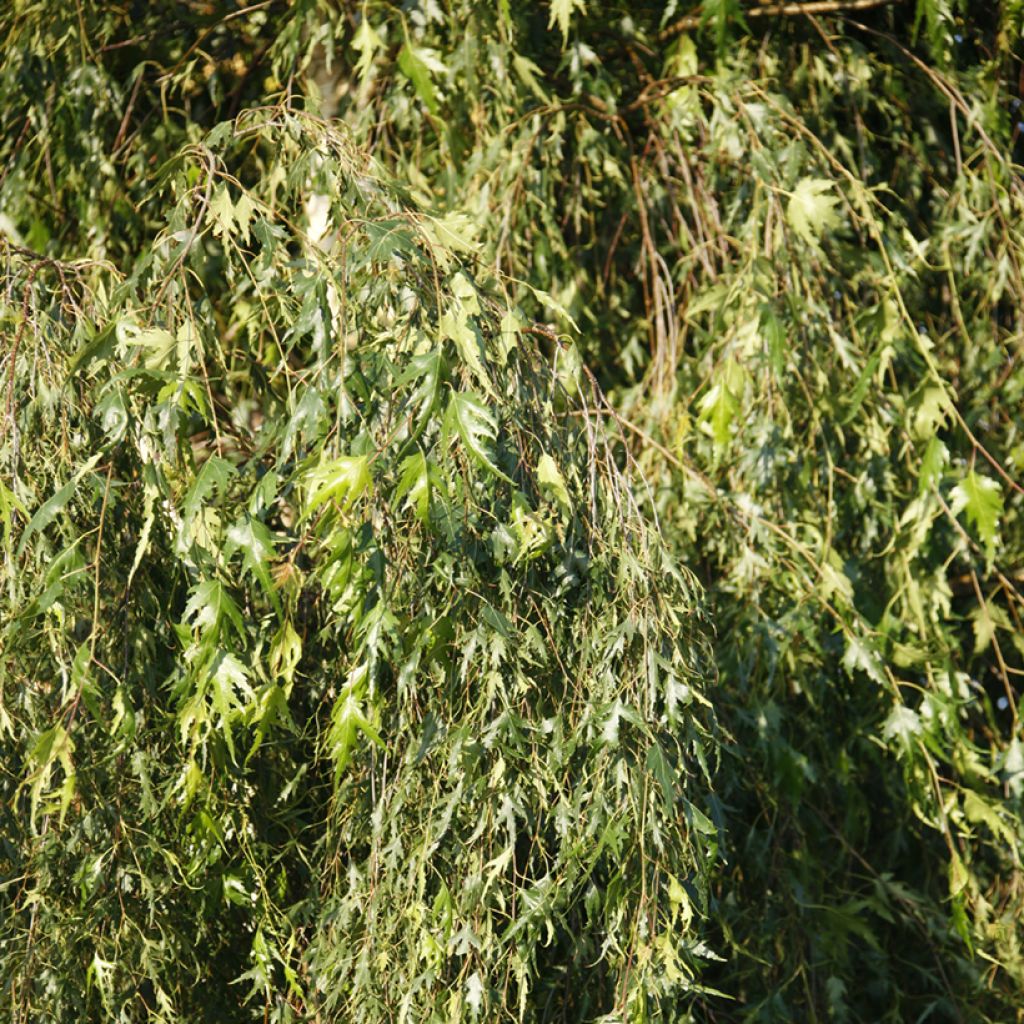

Betula pendula Gracilis - Weeping Birch
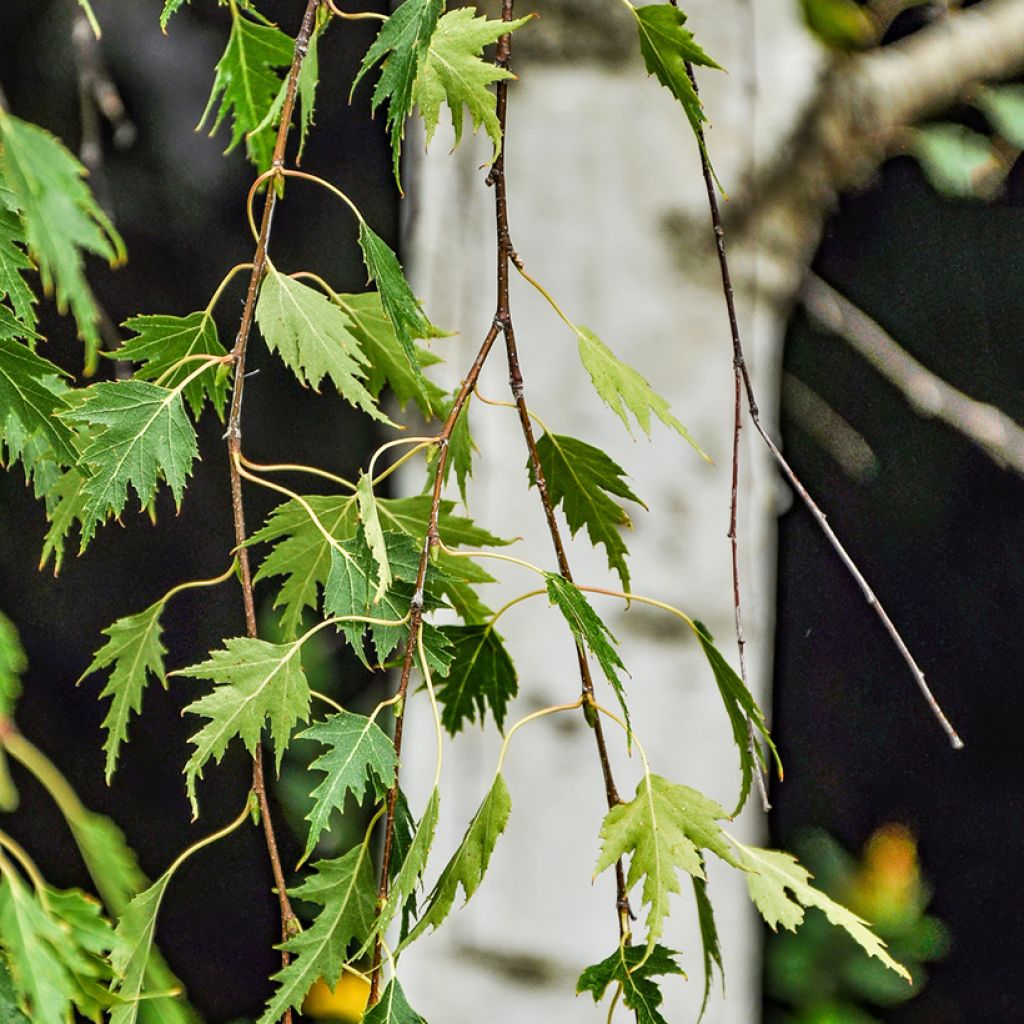

Betula pendula Gracilis - Weeping Birch
Betula pendula Gracilis - Weeping Birch
Betula pendula Gracilis
Silver Birch, European White Birch, Weeping Birch
Special offer!
Receive a €20 voucher for any order over €90 (excluding delivery costs, credit notes, and plastic-free options)!
1- Add your favorite plants to your cart.
2- Once you have reached €90, confirm your order (you can even choose the delivery date!).
3- As soon as your order is shipped, you will receive an email containing your voucher code, valid for 3 months (90 days).
Your voucher is unique and can only be used once, for any order with a minimum value of €20, excluding delivery costs.
Can be combined with other current offers, non-divisible and non-refundable.
Home or relay delivery (depending on size and destination)
Schedule delivery date,
and select date in basket
This plant carries a 24 months recovery warranty
More information
We guarantee the quality of our plants for a full growing cycle, and will replace at our expense any plant that fails to recover under normal climatic and planting conditions.
Would this plant suit my garden?
Set up your Plantfit profile →
Description
Betula pendula 'Gracilis' is a beautiful form of the weeping birch with laciniated foliage. Over time, this tree adopts the graceful habit expected of it and its white bark becomes creviced. In season, it dresses itself in fine-textured foliage, which turns golden in autumn. This birch undoubtedly has elegance. It will make a beautiful specimen to place in isolation in a park or large garden.
Native to mainly Central Europe and temperate Asia, Betula pendula (syn. B. verrucosa) or weeping birch is a large tree from the birch family. It is widespread, but absent from the Mediterranean region. This species, extremely resistant to cold, naturally has a pyramidal habit, a more or less straight trunk, and a generally oval crown carried by long branches with trailing twigs. Its annual growth is about 35 cm in height and 20 cm in width.
The 'Gracilis' form distinguishes itself with its more modest growth and its leaves deeply cut at the edges, irregularly toothed. This birch has a pyramidal habit when young. After a few years, a more or less straight leading branch shoots up, supporting an elongated crown. The inclined and erect secondary branches bear thin and very long twigs that hang down strongly, almost vertically. Eventually, this birch will reach an average height of 11 m with a spread of 8 m. With time, the bark on the trunk or older branches becomes very rough and develops deep crevices. The twigs are reddish-brown and punctuated by white warty lenticels. The foliage is deciduous, with leaves that are light green until late summer, then turn yellow to brown in autumn before falling. The inconspicuous flowering occurs in March-April in the form of greenish-yellow catkins.
The 'Gracilis' Weeping Birch is a very hardy tree and resistant to diseases. It adapts to a wide range of soils and requires a bright but not scorching exposure, in full sun or partial shade. It will have a stunning effect when isolated on a large lawn. Plant spring bulbs or cyclamen at its base, with ease.
Report an error about the product description
Betula pendula Gracilis - Weeping Birch in pictures


Plant habit
Flowering
Foliage
Safety measures
Botanical data
Betula
pendula
Gracilis
Betulaceae
Silver Birch, European White Birch, Weeping Birch
Cultivar or hybrid
atteinterespiratoire
Cette plante peut entraîner des symptômes allergiques.
Evitez de la planter si vous ou vos proches souffrez de rhinite saisonnière ("rhume des foins").
Davantage d'informations sur https://plantes-risque.info
Other Betula - Birch tree
View all →Planting and care
The Weeping Birch Karaca requires little maintenance and does not need to be pruned. It should be planted in a preferably slightly moist soil (not too dry in summer), low in limestone, rich in humus, slightly acidic to achieve beautiful foliage colouration, but it will also grow in neutral to slightly alkaline soil, in full sun or partial shade. It tolerates clayey, loamy, sandy, peaty, and nutrient-poor soils well. This tree produces numerous surface roots that can hinder the establishment of other plants under its crown, by drying out and depleting the soil. It does not tolerate sea spray well.
Planting period
Intended location
Care
This item has not been reviewed yet - be the first to leave a review about it.
Similar products
Haven't found what you were looking for?
Hardiness is the lowest winter temperature a plant can endure without suffering serious damage or even dying. However, hardiness is affected by location (a sheltered area, such as a patio), protection (winter cover) and soil type (hardiness is improved by well-drained soil).

Photo Sharing Terms & Conditions
In order to encourage gardeners to interact and share their experiences, Promesse de fleurs offers various media enabling content to be uploaded onto its Site - in particular via the ‘Photo sharing’ module.
The User agrees to refrain from:
- Posting any content that is illegal, prejudicial, insulting, racist, inciteful to hatred, revisionist, contrary to public decency, that infringes on privacy or on the privacy rights of third parties, in particular the publicity rights of persons and goods, intellectual property rights, or the right to privacy.
- Submitting content on behalf of a third party;
- Impersonate the identity of a third party and/or publish any personal information about a third party;
In general, the User undertakes to refrain from any unethical behaviour.
All Content (in particular text, comments, files, images, photos, videos, creative works, etc.), which may be subject to property or intellectual property rights, image or other private rights, shall remain the property of the User, subject to the limited rights granted by the terms of the licence granted by Promesse de fleurs as stated below. Users are at liberty to publish or not to publish such Content on the Site, notably via the ‘Photo Sharing’ facility, and accept that this Content shall be made public and freely accessible, notably on the Internet.
Users further acknowledge, undertake to have ,and guarantee that they hold all necessary rights and permissions to publish such material on the Site, in particular with regard to the legislation in force pertaining to any privacy, property, intellectual property, image, or contractual rights, or rights of any other nature. By publishing such Content on the Site, Users acknowledge accepting full liability as publishers of the Content within the meaning of the law, and grant Promesse de fleurs, free of charge, an inclusive, worldwide licence for the said Content for the entire duration of its publication, including all reproduction, representation, up/downloading, displaying, performing, transmission, and storage rights.
Users also grant permission for their name to be linked to the Content and accept that this link may not always be made available.
By engaging in posting material, Users consent to their Content becoming automatically accessible on the Internet, in particular on other sites and/or blogs and/or web pages of the Promesse de fleurs site, including in particular social pages and the Promesse de fleurs catalogue.
Users may secure the removal of entrusted content free of charge by issuing a simple request via our contact form.
The flowering period indicated on our website applies to countries and regions located in USDA zone 8 (France, the United Kingdom, Ireland, the Netherlands, etc.)
It will vary according to where you live:
- In zones 9 to 10 (Italy, Spain, Greece, etc.), flowering will occur about 2 to 4 weeks earlier.
- In zones 6 to 7 (Germany, Poland, Slovenia, and lower mountainous regions), flowering will be delayed by 2 to 3 weeks.
- In zone 5 (Central Europe, Scandinavia), blooming will be delayed by 3 to 5 weeks.
In temperate climates, pruning of spring-flowering shrubs (forsythia, spireas, etc.) should be done just after flowering.
Pruning of summer-flowering shrubs (Indian Lilac, Perovskia, etc.) can be done in winter or spring.
In cold regions as well as with frost-sensitive plants, avoid pruning too early when severe frosts may still occur.
The planting period indicated on our website applies to countries and regions located in USDA zone 8 (France, United Kingdom, Ireland, Netherlands).
It will vary according to where you live:
- In Mediterranean zones (Marseille, Madrid, Milan, etc.), autumn and winter are the best planting periods.
- In continental zones (Strasbourg, Munich, Vienna, etc.), delay planting by 2 to 3 weeks in spring and bring it forward by 2 to 4 weeks in autumn.
- In mountainous regions (the Alps, Pyrenees, Carpathians, etc.), it is best to plant in late spring (May-June) or late summer (August-September).
The harvesting period indicated on our website applies to countries and regions in USDA zone 8 (France, England, Ireland, the Netherlands).
In colder areas (Scandinavia, Poland, Austria...) fruit and vegetable harvests are likely to be delayed by 3-4 weeks.
In warmer areas (Italy, Spain, Greece, etc.), harvesting will probably take place earlier, depending on weather conditions.
The sowing periods indicated on our website apply to countries and regions within USDA Zone 8 (France, UK, Ireland, Netherlands).
In colder areas (Scandinavia, Poland, Austria...), delay any outdoor sowing by 3-4 weeks, or sow under glass.
In warmer climes (Italy, Spain, Greece, etc.), bring outdoor sowing forward by a few weeks.






























